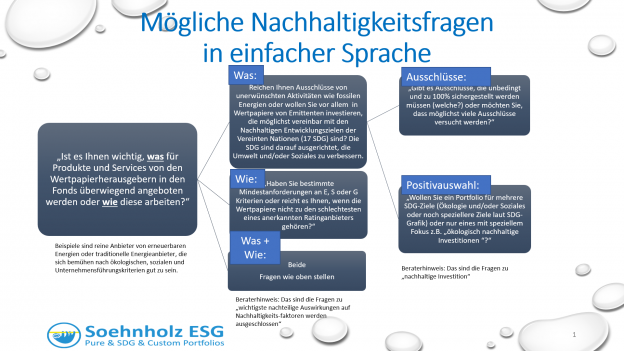Picture from ecolife.zone (Home – Eco Life Zone)
ESG beliefs: 10x new research on biodiversity, subsidies, governance, greenium, ESG beliefs, divestments, taxonomy reporting, fund commissions, SVB, private asset platforms etc. by Theresa Kuchler, Johannes Stroebel, Christian Klein and many more (# indicates the number of SSRN downloads on April 19th, 2023)
Ecologial and social research
Quantified biodiversity risks: Biodiversity Risk by Stefano Giglio, Theresa Kuchler, Johannes Stroebel, and Xuran Zeng as of April 4th, 2023 (#8): “The goal of this paper is to introduce measures of aggregate biodiversity risk as well as measures of firms’ and industries’ exposures to these risks; to connect and validate the two; to study the pricing of this risk in financial markets; and to publicly release our biodiversity exposure measures at www.biodiversityrisk.org to facilitate more research on this important topic“ (p. 28).
Dubious subsidies: Green Technology Adoption, Complexity, and the Role of Public Policy: A Simple Theoretical Model by Sanjit Dhami as of April 13th (#9): “We present a simple model of technology choice by heterogeneous firms … We illustrate the extreme unpredictability of the final outcome, and consider the role of public policy in the form of taxes and subsidies in influencing the long-run expected outcome. Our model … highlights the challenges and limitations of public policy in such scenarios“ (p. 24).
Good governance competition: Boosting Foreign Investment: The Role of Certification of Corporate Governance by Pietro Bonetti and Gaizka Ormazabal as of Jan. 31st, 2023 (#42): “… we exploit a recent cross-country initiative by a coalition of key institutions in Southeast Asia; the periodic publication of a “Top List” containing the top 50 firms for each participating Southeast Asian country based on an independent assessment of corporate governance practices. Our tests reveal that the inclusion in the list is associated with increases in foreign institutional ownership and equity issuance. We also find evidence suggestive that firms change their governance practices to be included in the list“ (p. 33).
Responsible investment research: ESG beliefs
Policy success: An empirical analysis of climate and environmental policy risk, the cost of debt and financial institutions‘ risk preferences by Xiaoyan Zhou, Ben Caldecott, and Gireesh Shrimali as of April 13th, 2023 (#9): “… we analyse the loan spreads variance using a large sample of syndicated loan data across 40 countries from 2000- 2019. … we observe that a higher level of CE (Sö: climate and environmental policy stringency) (such as carbon trading schemes) can lower the capital cost for loans issued to renewables, leading to an increase in renewable energy investments. We also find that the more stringent CE policies in a country, the lower likelihood of capital flow into oil & gas or coal. In the electricity sector, while no evidence supports that CE policies (solar & wind support policies) decrease the cost of debt for renewable electric utilities compared to fossil fuel and mixed electric utilities, they are still successful in attracting more capital to renewable firms” (abstract).
Performance trumps beliefs: Four Facts About ESG Beliefs and Investor Portfolios by Stefano Giglio, Matteo Maggiori, Johannes Stroebel, Zhenhao Tan, Stephen Utkus, and Xiao Xu as of April 13th, 2023 (#26): “We analyze survey data on ESG beliefs and preferences in a large panel of retail investors linked to administrative data on their investment portfolios. … First, investors generally expected ESG investments to underperform the market. Between mid-2021 and late-2022, the average expected 10-year annualized return of ESG investments relative to the overall stock market was −1.4%. Second, there is substantial heterogeneity across investors in their ESG return expectations and their motives for ESG investing: 45% of survey respondents do not see any reason to invest in ESG, 25% are primarily motivated by ethical considerations, 22% are driven by climate hedging motives, and 7% are motivated by return expectations. Third, there is a link between individuals’ reported ESG investment motives and their actual investment behaviors, with the highest ESG portfolio holdings among individuals who report ethics-driven investment motives. Fourth, financial considerations matter independently of other investment motives: we find meaningful ESG holdings only for investors who expect these investments to outperform the market, even among those investors who reported that their most important ESG investment motives were ethical or hedging reasons” (abstract).
Inefficient markets? Private Sanctions by Oliver D. Hart, David Thesmar, and Luigi Zingales as of Jan. 19th, 2023 (#338): “Neoclassical economics is based on the assumption that firms maximize profits. We provide survey evidence that a majority of Americans do not want the firms they invest in, shop from, and work for, to behave in this way. Limited deviations from value maximization are desired when firms can have a unique impact, as in the case of the sanctions against Russia for the purpose of ending the war. We show that a very simple model … can explain 24% of the cross-sectional variations in the willingness to boycott“ (p. 28). My comment see Impact Investing mit Voting und Engagement? (Opinionpost #194) – Responsible Investment Research Blog (prof-soehnholz.com)
Good taxonomy reporting: Portfolio benefits of taxonomy orientated and renewable European electric utilities by Thomas Cauthorn, Christian Klein, Leonard Remme, and Bernhard Zwergel as of Jan. 12th, 2023 (#65): “We find a positive low-carbon premium (confirming H1) for portfolios of taxonomy orientated and renewable energy EEU. … We can confirm H2, i.e., the level of renewables in the energy mix positively affects the returns of the taxonomy orientated and renewable energy portfolios while negatively affecting the non-orientated, non-reporting and conventional energy portfolios. The taxonomy orientated and renewable energy portfolios outperformed their counterparts confirming H3. … Next, we find that a taxonomy orientated portfolio outperforms a non-reporting portfolio” (p. 18/19). My comment see Taxonomy reporting: Can companies boost their share-prices? – (prof-soehnholz.com)
Traditional and alternative investment research (ESG beliefs)
Bad commissions: The Effect of Commission Bans on Household Wealth: Evidence from OECD Countries by Steffen Sebastian, Lukas Noth, and Albert Grafe as of April 5th, 2023: “Although misaligned incentives of financial advisors created by commission-based systems have been shown to have a negative impact on the quality of financial advice, many countries decided not to introduce commission bans. In the European Union, only five including the UK countries followed the recommendation of the Commission to ban commission-based financial advice. … Countries with commission-bans in place have seen an outperformance of their wealth between 1.7 percent and 2 percent annually. … We find that a household in a commission-ban country achieves wealth levels double the amount of a household in a non-commission-ban country over the period of 40 years with the most conservative estimate (typical timespan for retirement provision). … countries that have implemented commission bans realized ~900 billion USD access wealth formation compared to countries without commission bans” (p. 19).
Crash herding: Public attention, sentiment and the default of Silicon Valley Bank? by Stephan Bales and Hans-Peter Burghof as of April 7th, 2023 (#123): “We assess the interplay between public attention and trading of the Silicon Valley Bank stock around its default on March 10, 2023. Based on tweets and Google searches, we demonstrate that public attention considerably fueled the crash dynamics … the attention dynamics fueled and accelerated the downward spiral, but are not fully responsible for the outcome” (p. 11/12).
Private Equity Fintechs: The Amplify private-asset platforms study by Selin Bucak from Citywire Amplify as of April 13th, 2023: “There has been a proliferation of private-asset platforms in recent years. Specialist investment firms want to reach into the wealth management space, while many mainstream asset managers have pushed hard into private markets. So what does the landscape look like now? Citywire Amplify will examine how many platforms there are, what they offer and how they differ. We have collated the key data on the major players: how much they have raised, who their backers and partners are and, crucially, what they charge” (p. 2). My comment see Über 70 interessante Fintechs für institutionelle Anleger – Responsible Investment Research Blog (prof-soehnholz.com)
………………………………..
Advert for German investors: “Sponsor” my research by investing in and/or recommending my article 9 mutual fund. The fund focuses on social SDGs and midcaps, uses separate E, S and G best-in-universe minimum ratings and broad shareholder engagement. The fund typically scores very well in sustainability rankings, e.g. see this free new tool, and the performance is relatively good: FutureVest Equity Sustainable Development Goals R – DE000A2P37T6 – A2P37T









